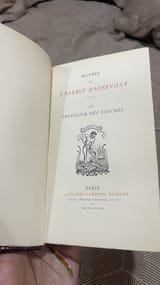Search Results
6/28/2025, 3:04:14 PM
>>24503208
It's cool that you are learning but most modern resources I have found online are very bad. DAS is the only good one I know but his stuff is extremely basic. I recommend, Szirmai, Diehl and these two articles:
https://thebookandpapergathering.org/2022/06/09/materials-and-mechanics-for-book-conservation-part-i-engineering-concepts-for-spine-lining-design/
https://thebookandpapergathering.org/2024/01/30/materials-and-mechanics-for-book-conservation-part-ii-the-impact-of-sewing-on-spine-structure/
Also, knowing woodworking goes a long way.
>Did you bind that book yourself? It looks very smooth.
No, I am only interested in codical bindings, which are typically very large, time consuming and meant to be read on some sort of stand. I find it impractical to have a library full of them. This is a mid-eighteenth century book I found in Paris, most likely sewn on recessed cords. This is what you would expect popular books to be bound in at this time period, which is why I feel this is the most appropriate binding for furnishing a library with. It's very strong despite actually representing the first decline in bookbinding.
Your binding is—what I am going to assume is—what the Thames and Hudson manual calls the "library binding." I am guessing you copied it after DAS. It's a very ugly type of binding especially because of the groove. There also may be some issue with leather paring. The one in my picture has no groove, which is what makes it look so smooth. This was commonplace for books before cloth and synthetic materials became popular, which requires a groove due to the lack of elasticity of these materials.
It's cool that you are learning but most modern resources I have found online are very bad. DAS is the only good one I know but his stuff is extremely basic. I recommend, Szirmai, Diehl and these two articles:
https://thebookandpapergathering.org/2022/06/09/materials-and-mechanics-for-book-conservation-part-i-engineering-concepts-for-spine-lining-design/
https://thebookandpapergathering.org/2024/01/30/materials-and-mechanics-for-book-conservation-part-ii-the-impact-of-sewing-on-spine-structure/
Also, knowing woodworking goes a long way.
>Did you bind that book yourself? It looks very smooth.
No, I am only interested in codical bindings, which are typically very large, time consuming and meant to be read on some sort of stand. I find it impractical to have a library full of them. This is a mid-eighteenth century book I found in Paris, most likely sewn on recessed cords. This is what you would expect popular books to be bound in at this time period, which is why I feel this is the most appropriate binding for furnishing a library with. It's very strong despite actually representing the first decline in bookbinding.
Your binding is—what I am going to assume is—what the Thames and Hudson manual calls the "library binding." I am guessing you copied it after DAS. It's a very ugly type of binding especially because of the groove. There also may be some issue with leather paring. The one in my picture has no groove, which is what makes it look so smooth. This was commonplace for books before cloth and synthetic materials became popular, which requires a groove due to the lack of elasticity of these materials.
Page 1
